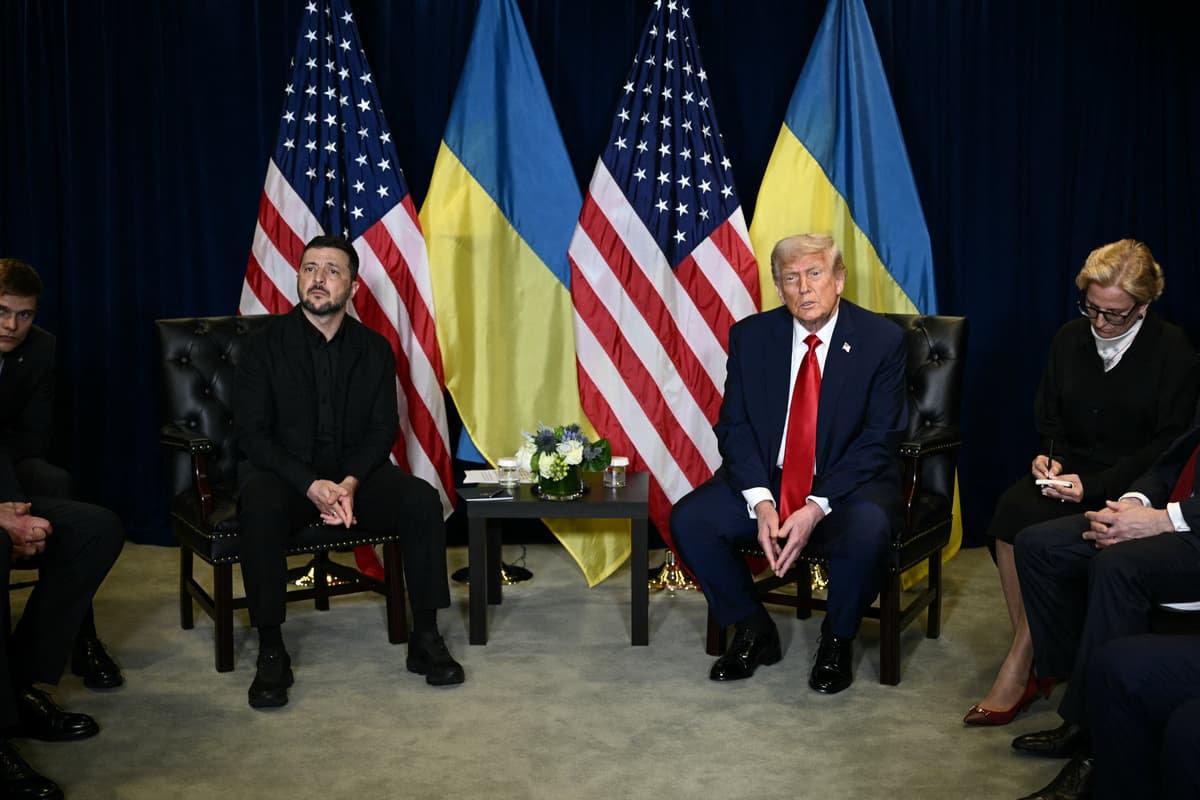Drones in hybrid escalation
On September 9th 2025, around 20 Russian drones penetrated deep into Polish airspace, forcing the closure of airports in Warsaw and triggering NATO’s highest alert since the start of the full-scale war. Poland’s Prime Minister Donald Tusk convened an emergency government meeting, calling the violation unprecedented in scale and invoking NATO’s Article 4 for consultations in case of a threat.
A week later, another Russian drone breached Romanian airspace during an attack on Ukraine, prompting Bucharest to scramble fighter jets in consequence to this hybrid provocation. Earlier in August, Romania suffered a suspected sabotage blast at the Cugir arms factory, destroying more than 130,000 rounds of ammunition for Ukraine.
These provocations are not isolated spillovers from the war in Ukraine. They came on the eve of Zapad 2025, the largest Russian-Belarusian military exercise since 2021. The Kremlin is deliberately probing NATO’s readiness, combining drone incursions, sabotage, and GPS jamming to send a strategical message that defending the Alliance’s frontline states will carry real costs.
Recent months have besides seen an increase in sabotage cases linked to Russian networks across Europe, including the arrest of a Colombian national for arson in Warsaw; convictions of 3 men in London for burning a warehouse storing Starlink devices for Ukraine; and an eight-year conviction for another Colombian national in Prague over an arson game on public transport.
The Kremlin’s drone usage should be viewed as part of a broader hybrid warfare run that combines physical demolition with another hybrid tools (e.g., sabotage, disinformation, and intellectual warfare) to undermine social cohesion in Europe and military and economical support for Ukraine. Each drone incursion into NATO territory is simply a deliberate test of the Alliance’s resilience and the EU’s ability to adapt to hybrid pressure. And more situations like this will likely follow in NATO’s east Flank as part of the Kremlin’s hybrid warfare campaign.
From tactical tool to strategical doctrine
The Kremlin is actively ramping up drone production this year on a scale not matched since 2022. It is investing heavy in expanding industrial infrastructure and drone innovation, as well as attracting more labour to drone production. This fresh advancement in the Kremlin’s hybrid warfare approach poses a threat to Ukraine and wider European security.
In July 2025, Russian Prime Minister Mishustin announced at the industrial exhibition in Yekaterinburg that unmanned aerial vehicle (UAV) production had already tripled compared to first targets for the year. This announcement confirms the worrisome shift that has been visible for months across Ukrainian skies. Overall, the Kremlin is expected to produce between 3 and 4 million drones in 2025, building on a reported 1.4 million made in 2024. The Kremlin’s intended nonsubjective is to solidify drones as a central pillar of its war economy.
Recent figures confirm this trajectory, with Russia having already produced more than 34,000 strike drones and decoys as of mid-September, nearly 9 times more than in the same period of 2024.
A fresh industrial base for drone warfare
Russia is swiftly building the infrastructure to support its drone improvement campaign. In early 2025, the Kremlin launched domestically engineered lithium-ion battery production at the UAS “Samara” innovation centre in Tolyatti. Its yearly production capacity amounts to over 100,000 units for tiny UAVs and more than 8,000 for larger platforms each year. This capability is officially intended for educational and agricultural drones, but is likely scalable to military use. Additionally, in February 2025, a dedicated facility began manufacturing high-quality composite propellers and rotor blades for drones of all sizes in Novosibirsk.
Also in June 2025, Rosel, an affiliate of Rostec, Russia’s state-owned defence-industrial conglomerate, unveiled a satellite-independent navigation strategy for drones, designed to function in GPS-denied environments and withstand cyber and electronic warfare, serving as a direct consequence to western jamming capabilities. The strategy passed flight investigating and is now ready for serial production. This is straight applicable to NATO, given the GPS jamming already affecting flights in Europe, peculiarly in the Baltic region.
The September incidents in Poland and Romania show how these technological upgrades are already being operationalized against NATO airspace. What Ukraine has faced for 2 years is now visibly spilling into Europe’s skies.
Together, these technologies supply a more autonomous and sanction-resilient drone architecture, designed for prolonged usage in wartime. These developments are part of a broader strategy to minimize reliance on imports and facilitate vertical integration throughout Russia’s drone production chain.
Innovation on the battlefield
The Kremlin is not simply focused on quantity but pursues more tactical innovation. It deploys fresh frontline drone types at pace, each adapted for a peculiar military mission. Miniaturized FPV-guided drones, frequently referred to as Mini-Shaheds, are now widely utilized in east Ukraine. These compact drones, with a wingspan of about 1.5 metres and capable of carrying up to 15 kilograms of explosives, are manually piloted and designed for precision strikes against both static and mobile targets.
In June 2025, Ukrainian forces downed a fresh Shahed-136 MS001 drone featuring thermal vision, autonomous targeting, and AI-enabled swarm coordination. These drones are capable of selecting targets and operating in coordination with another units without real-time operator input. These developments indicate that the Kremlin is actively investigating battlefield autonomy and preparing to overwhelm defences through coordinated saturation attacks.
Other systems are filling gaps in Russia’s tactical architecture. In July 2025, the Kinzhal interceptor drone, designed to ram enemy drones utilizing thermal guidance, was presented at the Innoprom 2025 exhibition in Yekaterinburg. Moreover, the Kremlin announced that it developed Svarog, a heavy-lift logistics drone intended for frontline deployment in August, capable of transporting payloads of up to 50 kilograms at night. Meanwhile, the Kremlin besides launched the production of naval drones at the Kingisepp device Plant, further blurring the boundary between civilian and military domains in the Black Sea.
Many of these systems are jam-resistant, solar-powered, or designed with modular payloads. any are paired with decoys to confuse radar, while others are launched in large formations to exhaust Ukrainian air defences. Russia is investigating its approach in real-time and refining it with battlefield feedback.
perceive to the latest Talk east Europe podcast episode:
Scaling the workforce: training and coercion
The Kremlin invests heavy in training programmes to match the scale of its technological advancements in drones. Earlier this year, the Kremlin launched a government plan to train 1.5 million drone operators by 2030, integrating drone usage into the fabric of Russia’s military, educational, and industrial systems. At the same time, the Kremlin is supplementing its workforce through aggressive and frequently exploitative recruitment practices.
The Alabuga peculiar economical region in Tatarstan has become a hub for Russian drone manufacturing. Since late 2024, it has expanded by over 160 hectares. Satellite imagery and investigative reports confirm the construction of dozens of dormitories to home a increasing base of abroad labour. Hundreds of women from Africa, Latin America, and Asia have been recruited under misleading “training” programmes and are now reportedly working in coercive conditions on drone assembly lines.
There is evidence that many of these workers face travel restrictions, long working hours, and surveillance. Meanwhile, since June 2025, the Kremlin has been working to bring in up to 25,000 North Korean workers to meet production demands. These labour practices, erstwhile peripheral, have become central to its wartime industrial model.
Targeting civilians while investigating Ukrainian resilience
The Kremlin’s operational drone usage in Ukraine has intensified in both scale and lethality. According to the UN Office of the advanced Commissioner for Human Rights, more than 1,500 civilians were killed or injured in June 2025 alone, with drones liable for over half of those casualties. July’s casualty numbers were the highest since May 2022, with 286 civilians killed and 1,388 injured.
In August, while drone strength dipped, it remained lethal, with the Kremlin launching 4,132 long-range drones, with attacks killing 208 civilians and wounding 827 others. The end of August was peculiarly ruthless. In a single night (27th to 28th August), Russia launched 598 drones and 31 missiles, killing 23 people in Kyiv, including 4 children, and injuring 64. Most importantly, short-range drone strikes led to more civilian casualties than any another weapon, killing 58 and injuring 272 civilians, mainly in the Kherson and Donetsk oblasts. These attacks have continued into September with the fresh evidence launch of 810 drones, a scale that overwhelmed Ukrainian defences and highlighted the Kremlin’s ability to sustain drone saturation tactics.
These attacks are not simply of a military nature but are part of intellectual campaigns designed to destabilize Ukrainian society, degrade the functionality of public services, and test the endurance of civilians. The same approach, already exported to NATO states like Poland and Romania, shows that Moscow considers drone warfare as a hybrid tool for coercion far beyond Ukraine’s borders.
Implications for Europe
Russia’s expanding focus on drone production should be watched very closely by NATO and the EU. The September drones flying into Poland and Romania show a turning point in escalation between Russia and the West. These fresh incidents illustrate that the Kremlin’s drone run has transitioned into a transnational hybrid strategy aimed at NATO’s east Flank as much as Ukraine itself.
The architecture being tested in Ukraine, including AI-powered swarms, autonomous targeting, home production lines, and coercive labour, is designed for adaptability. The September cases underline how the Kremlin considers integrating drones into hybrid campaigns against NATO itself, combining sabotage, disinformation, and airspace violations.
Ukraine and its partners must treat this evolution not as a temporary phase, but as a structural transformation in modern warfare. Counter-drone solutions, including mobile jamming units, high-energy lasers, and AI-based defences, must become a strategical priority. Similarly, sheltering systems, emergency communications, and investment in home drone innovation are besides essential.
The Ukrainian leadership should accelerate its defence-industrial capacity. fresh joint drone initiatives with the UK, Denmark and the Netherlands are promising. Nevertheless, they may face procurement hurdles and transportation delays. It is crucial to view Ukraine’s industrial base as a strategical asset not only for Ukraine but besides for European safety as a whole.
Beyond the battlefield, sanctions on drone components must be tightened and extended to cover labour supply chains. Institutions in the West should increase oversight on how drone-related technologies are being assembled and by whom. This is especially urgent given that Chinese-made parts were late discovered in Russian “Shahed” drones, manufactured just weeks before the latest intensified strikes on Kyiv.
The war in Ukraine is no longer just about missiles and manpower but increasingly more about infrastructure resilience, automation, and information dominance. European countries must adapt rapidly while supporting Ukraine, which has become a investigating ground for what could happen to Europe on a large scale in the close future.
Conclusion
Russia’s key goal is to outproduce, out-adapt, and export a model of hybrid coercion that undermines civilian resilience beyond Ukraine in NATO’s east Flank. The September cases in Poland and Romania show that this model is already moving beyond Ukraine, probing NATO’s east Flank and exposing vulnerabilities in Europe’s ability to deter hybrid incursions. Unless NATO and the EU adopt a unified counter-drone doctrine, integrate civilian defence into safety planning, and prepare for hybrid force campaigns that combine drones with sabotage and disinformation, Europe will face the same saturation tactics now deployed in Ukraine.
Maksym Beznosiuk is a strategical policy and safety analyst & author with a focus on Ukraine, Russia, hybrid warfare, European security, and EU-Ukraine cooperation. He holds an LL.M. in Global Environment and Climate Change Law from the University of Edinburgh, a Double Master’s in European Studies (Euroculture) from Uppsala and Jagiellonian universities, and Bachelor’s and Specialist degrees in global Law and global Relations from Kyiv National Taras Shevchenko University.
New east Europe is simply a reader supported publication. delight support us and aid us scope our goal of $10,000! We are nearly there. Donate by clicking on the button below.












![Hamas zwrócił kolejne ciała zakładników. Izrael miał otworzyć ogień w Strefie Gazy [RELACJA]](https://cdn.wiadomosci.onet.pl/1/vZsk9lBaHR0cHM6Ly9vY2RuLmV1L3B1bHNjbXMvTURBXy9hOTgxYzNiMjdiZjUyNTY3ZWZlZjBjNzViNWU5NjIxNS5qcGeSlQMAzM_NDmzNCByTBc0JYM0GQN4AAqEwB6ExBA)